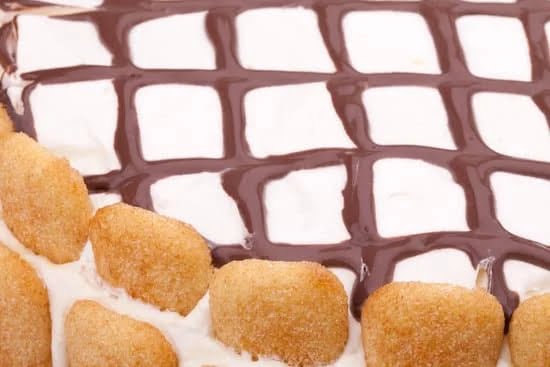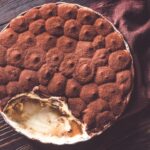Cake decorating has taken on a whole new level of creativity and artistry in recent years, with decorators constantly pushing the boundaries of what can be achieved. One emerging trend that has captured the attention of both professional cake artists and home bakers alike is the use of rocks as a decorative element. Yes, you read that correctly – rocks.
These seemingly ordinary objects can make a surprisingly stunning addition to any cake design. In this article, we will explore why rocks are becoming a popular choice for cake decorating and delve into the techniques involved in creating edible rocks.
The impact that rocks can have on a cake’s overall appearance cannot be underestimated. When skillfully incorporated into a design, they can transform an ordinary cake into something truly extraordinary. Whether you’re aiming for a rustic theme or want to add some natural texture to your creation, rocks provide plenty of creative opportunities. Their versatility allows them to be a focal point or simply an accent piece that complements other decorations.
When it comes to selecting the perfect rock size and shape for your cake, there are some essential considerations to keep in mind. First and foremost, you want the rocks to harmonize with the design aesthetic you have in mind. Additionally, you must consider the size and weight of your cake before adding any significant elements like rocks to ensure stability and prevent any mishaps during transport or display.
As exciting as it may sound, using rocks for cake decorating does come with some safety considerations that should not be overlooked. Properly cleaning and sanitizing the rocks before use is crucial to maintain food safety standards. Furthermore, securely attaching the rocks to the cake is vital to avoid any accidents or choking hazards.
Whether you are an experienced decorator looking to broaden your skills or a beginner eager to try something new, learning how to make edible rocks opens up endless possibilities for enhancing your cakes. In the upcoming sections, we will guide you through each step of creating edible rocks from scratch while providing tips and techniques for achieving realistic textures and colors. Get ready to elevate your cake decorations with the mesmerizing beauty of rocks.
Choosing the Perfect Rock Size and Shape for Your Cake
When it comes to cake decorating, choosing the right size and shape of rocks is crucial to achieving the desired aesthetic. The stones should complement the design and theme of the cake, adding depth and visual interest. Here are some tips to help you select the perfect rocks for your cake.
Tips for selecting rocks that complement the cake design
Consider the overall design of your cake before choosing rocks. If you have a rustic or nature-themed cake, opt for irregular-shaped rocks with rough textures to create a more organic look. On the other hand, if you have a modern or elegant cake, smooth and polished rocks would be more appropriate.
Another important consideration is color coordination. Look at the color palette of your cake design and choose rocks that either match or provide a nice contrast to it. For example, if you have a pastel-colored cake, using lighter colored rocks can create a harmonious effect.
Considering size and weight when choosing rocks
The size of the rocks should be proportional to the overall size of your cake. If you have a smaller cake, choose smaller rocks to avoid overwhelming it. Large cakes can handle larger rocks but make sure they are not too heavy that they might sink into the frosting or cause stability issues.
It is also important to consider how stable your chosen rock shapes are when placed on top of each other. If you plan on stacking multiple rock-shaped decorations on one side of your cake, make sure they are stable enough to hold their position without collapsing.
By carefully selecting rock sizes and shapes that enhance your cake design while considering weight and stability factors, you can achieve a beautifully balanced composition that elevates your cake decorating skills to new heights.
Safety Considerations When Using Rocks for Cake Decorating
When it comes to using rocks for cake decorating, it is important to prioritize safety to prevent any mishaps or contamination. This section will cover the essential safety considerations when working with rocks for cakes.
Ensuring Proper Cleaning and Sanitization
Before incorporating rocks into your cake design, it is crucial to ensure that they are properly cleaned and sanitized. Rocks can be found outdoors and may carry dirt, bacteria, or other contaminants that can be harmful if ingested. To clean rocks, start by rinsing them thoroughly with water to remove any visible dirt or debris.
Next, soak the rocks in a mixture of warm water and mild dish soap for about 10-15 minutes. Scrub each rock gently with a brush to remove any stubborn residue. Rinse the rocks again with clean water and let them air dry completely before use.
Securely Attaching Rocks to the Cake
Another important safety consideration is how to securely attach the rocks to the cake. The last thing you want is for an edible rock to fall off and potentially cause harm when someone takes a bite of the cake. There are different approaches you can take depending on the size and weight of the rocks as well as the type of frosting or icing used on the cake.
One method is to use toothpicks or skewers as anchors for the rocks. Simply insert half of a toothpick or skewer into both the rock and the cake, making sure it is positioned securely without protruding too much from either surface. Another option is using edible adhesive such as royal icing or melted chocolate to glue smaller rocks directly onto the cake surface.
Regardless of your chosen method, always be mindful of where you place the rocks on the cake. Avoid positioning them near delicate decorations that could be damaged if accidentally bumped by a rock.
By following these safety considerations, you can ensure that your beautiful rock decorations not only look stunning but are also safe for consumption. Now that we have covered the safety aspects, let’s move on to the materials and tools needed to create edible rocks.
Materials and Tools Needed to Create Edible Rocks
To create realistic and visually stunning edible rocks for cake decorating, you will need a variety of materials and tools. Below is a comprehensive list of ingredients required to make edible rocks as well as the essential tools for shaping, texture, and detailing:
Materials:
- Fondant or modeling chocolate: These are the base materials used to shape the rocks. Both fondant and modeling chocolate can be easily manipulated and colored to achieve different textures.
- Gel food coloring: Use gel food coloring in various shades of gray, brown, or other earthy tones to color the rocks. This will help create a more authentic look.
- Edible dusts or petal dusts: These powders can be used to add depth, shading, and natural coloring to the rocks. Dusts come in various colors such as browns, grays, and blacks that mimic the natural hues of rocks.
- Edible glue or royal icing: To securely attach the rocks onto the cake, you will need an adhesive such as edible glue or royal icing.
Tools:
- Sculpting tools: Use sculpting tools with different tips such as ball, cone, flat, or pointed ends to shape and carve details into the rocks.
- Texture mats or impression mats: These mats have various patterns that can be pressed onto the fondant or modeling chocolate to create realistic textures like rock surfaces.
- Paint brushes: Fine-tipped paint brushes are useful for applying edible dusts or petal dusts to add depth and coloring on the textured rocks.
- Rolling pin: A rolling pin is necessary to flatten out fondant or modeling chocolate before shaping it into rocks.
- Wax paper: Place your fondant or modeling chocolate on wax paper while working with it to prevent it from sticking to your work surface.
Having all these materials and tools ready will ensure a smooth process when creating edible rocks for cake decorating. Remember that experimentation is key – feel free to use different techniques and textures to bring out your creativity and make your cake truly unique.
Creating Realistic Texture and Coloring for Edible Rocks
Creating realistic texture and coloring is essential when making edible rocks for cake decorating. This step adds a touch of authenticity to the cake design and helps create visually stunning cakes. To achieve lifelike textures on the rocks, there are several techniques that can be employed:
Imprinting Technique
Use various tools to imprint textures onto the rocks, such as toothpicks, forks, or even small brushes. This will create grooves and ridges that mimic the natural texture of rocks. Experiment with different tools and pressure levels to achieve desired effects.
Stippling Technique
Dip a sponge or brush in food coloring or gel paste, then dab it lightly onto the surface of the rock. This technique creates a speckled effect similar to pebbles or granite rocks. Varying colors can be used to add depth and dimension to the rocks.
Dry Brushing Technique
Apply food coloring directly onto a dry brush and lightly brush it onto the surface of the rock. This method allows for controlled application and can create highlights and shadows, giving a more realistic appearance.
When it comes to coloring options for edible rocks, there are various choices available:
Natural Earth Tones
Use shades of browns, grays, and tans to imitate natural rock colors like sandstone or slate. Mix different shades together to achieve variations in color.
Vibrant Colors
Explore using vibrant food coloring gels or powders to create colorful fantasy rocks that match a specific theme or design concept.
To ensure the colors adhere well to your edible rocks, it’s important to apply them on a slightly dampened surface using a brush or sponge. This will help the colors blend in naturally while maintaining their intensity.
Step-by-Step Guide
Making realistic edible rocks for cake decorating can be a fun and creative way to elevate your cake designs. With the right techniques and materials, you can achieve lifelike textures and colors that will make your cakes stand out. In this step-by-step guide, we will walk you through the process of making rocks for cake decorating.
Step 1: Gather Your Materials
Before you start making edible rocks, make sure you have all the necessary ingredients and tools on hand. Here is a list of what you’ll need:
- Fondant or modeling chocolate: These will serve as the base material for creating the rocks.
- Cornstarch or powdered sugar: This will prevent the fondant or modeling chocolate from sticking to your hands and work surface.
- Food coloring: Choose colors that mimic realistic rock shades such as gray, brown, or tan.
- Edible dusting powder: Optional but recommended for adding depth and shading to your rocks.
- Paintbrushes: Use various sizes to apply edible dusting powder or paint onto the rocks.
- Rolling pin: This will help you flatten the fondant or modeling chocolate.
- Wax paper or parchment paper: Use this to prevent sticking when rolling out the fondant or modeling chocolate.
Step 2: Creating the Rock Shape
To create realistic rock shapes, follow these steps:
- Start by taking a small piece of fondant or modeling chocolate and rolling it into a ball shape.
- Flatten the ball with your palm so that it becomes slightly oval-shaped.
- Using your fingers, pinch and mold the oval shape until it resembles a rough rock surface with uneven edges and angles. Feel free to experiment with different textures and shapes based on your desired look.
Step 3: Adding Texture
Adding texture is essential for achieving realistic-looking rocks. Here are some techniques you can use:
- Use a toothpick or small knife to create cracks, crevices, and indentations on the surface of the rock.
- Roll a piece of fondant or modeling chocolate into thin ropes and attach them to the rock to mimic veins or layers.
- Dab a paintbrush with edible dusting powder or cocoa powder and lightly brush it onto the rocks. This will enhance the texture and add depth.
Step 4: Coloring Your Rocks
Coloring your rocks is where you can unleash your creativity. Here are some ways to achieve different colors and shading:
- Mix different food coloring gels to achieve various shades of gray, brown, or tan that resemble natural rocks.
- Apply food coloring directly onto specific parts of the rock using a paintbrush for targeted coloration.
- Dust edible dusting powder onto the rocks using a paintbrush for subtle shading effects.
Once you have completed these steps, repeat them until you have created as many rocks as needed for your cake design. Remember to allow your edible rocks time to dry and harden before attaching them to the cake.
By following this step-by-step guide, you can create stunningly realistic rocks for cake decorating that will impress anyone who sees your masterpiece. So go ahead and let your imagination run wild.
Decorating Techniques Using Edible Rocks
When it comes to cake decorating, incorporating edible rocks can add a unique and eye-catching element to your design. Whether you’re aiming for a rustic, nature-inspired theme or creating a cake that mimics geological formations, the use of edible rocks can elevate your cake decor and impress your guests. In this section, we will explore some creative ideas and provide tips on how to arrange edible rocks to enhance the overall presentation of your cake.
One way to incorporate edible rocks into your cake design is by creating a focal point using a cluster of rocks. Arrange different-sized rocks in various shades to create visual interest and depth. You can place them strategically on the upper tiers of a multi-tiered cake or surround the base of the cake for an earthy appeal. For a more whimsical look, consider adding edible moss or sugar flowers near the rocks to create an enchanted garden theme.
Another technique is to use edible rocks as borders or accents on your cake. You can line the edges of each tier with small pebble-like rocks for a polished and clean look. This works particularly well for minimalist designs that call for simplicity and elegance. Additionally, you can use larger, textured rocks as statement pieces by arranging them vertically along the side of the cake.
For those with artistic inclinations, edible rocks can be used to create intricate patterns or scenes on cakes. With some creativity and attention to detail, you can achieve stunning results by arranging small pieces of rock into fascinating designs such as mosaic patterns or even picturesque landscapes. This technique requires patience and precision but can result in truly awe-inspiring cake decorations.
| Cake Decorating Idea | Technique |
|---|---|
| Focal Point Cluster | Arrange different-sized rocks in various shades |
| Edible Rock Border | Line the edges of each tier with small pebble-like rocks |
| Intricate Designs and Scenes | Create patterns or scenes using small pieces of rock |
The key to successfully incorporating edible rocks into your cake design is to ensure they are firmly attached. You can utilize non-toxic, food-safe adhesive or melted candy melts to secure the rocks in place. Prioritize safety by avoiding overloading your cake with heavy rocks that may cause it to collapse. It’s also essential to communicate with your clients or guests about the presence of edible rocks in case there are any allergy concerns.
Unlock your creativity and explore the endless possibilities that edible rocks offer for cake decorating. Whether you’re going for a natural and organic look or an avant-garde design, incorporating edible rocks can make a significant impact on the visual appeal of your cake. Experiment with different arrangements, textures, and colors to create a unique masterpiece that will leave everyone amazed. Happy decorating.
Alternative Methods to Create Rocks for Cake Decoration
While creating edible rocks for cake decoration is a popular choice, there are alternative methods that can be used to achieve similar results. One of these alternatives is using edible clay, which offers a unique and different way to incorporate rocks into your cake design. Edible clay can be molded and shaped just like regular clay, providing a more flexible and customizable option.
One advantage of using edible clay for creating rocks is that it can easily be colored to achieve the desired effect. With a wide range of food coloring options available, decorators have the freedom to create rocks in various colors and shades. This allows for greater versatility in cake designs and gives decorators more control over the final aesthetic.
Another advantage of using edible clay is that it can be shaped with greater precision than some other methods. By using tools such as sculpting tools or even toothpicks, decorators can add intricate details and textures to the rocks. This level of detail is especially beneficial when working on cakes with specific themes or designs that require realistic-looking rocks.
However, there are some disadvantages to using edible clay as an alternative method for creating rocks. Firstly, unlike edible options, cakes decorated with non-edible materials should only be used for display purposes and not consumed. Additionally, while edible clay may offer more flexibility in terms of shape and texture, it can be more time-consuming compared to creating edible rocks.
Troubleshooting and Frequently Asked Questions
As with any new skill or technique, making edible rocks for cake decorating may come with its fair share of challenges. In this section, we will address some common issues that may arise during the rock-making process and provide answers to frequently asked questions from aspiring cake decorators.
One common problem that decorators may encounter is difficulty achieving the desired texture on their edible rocks. It is important to remember that creating realistic textures takes practice and experimentation. If your rocks are turning out too smooth or lacking in detail, try using a combination of different tools to create texture.
For example, you can use a toothpick, small brush, or even the edge of a spatula to create different grooves and lines on the surface of the rock. Additionally, experimenting with different techniques such as rolling the dough in cocoa powder or applying powdered sugar before shaping can add depth and dimension to your rocks.
Another issue that decorators may face is getting the right coloring for their edible rocks. To make your rocks look authentic and visually appealing, it’s important to select the right colors and shading techniques. One effective method for achieving natural colors is to use a combination of gel or powder food coloring and cocoa powder or ground coffee.
Start with small amounts of coloring and gradually build up until you achieve the desired hue. It’s also helpful to consider the type of rock you are trying to replicate – research images of real rocks for inspiration and guidance on color choices.
Frequently Asked Questions:
- Can I reuse edible rocks?
- How long do edible rocks last?
- Can I refrigerate cakes decorated with edible rocks?
Edible rocks can be reused if they are stored properly. Make sure they are stored in an airtight container away from moisture and direct sunlight. Before reusing them, thoroughly clean and sanitize each rock using food-safe cleaning agents.
The shelf life of edible rocks depends on several factors such as ingredients used and storage conditions. Generally speaking, if stored properly in an airtight container, edible rocks can last up to several months. However, it is best to check for any signs of mold or degradation before using them again.
Yes, you can refrigerate cakes decorated with edible rocks. However, keep in mind that moisture from the refrigerator may affect the appearance and texture of the rocks over time. It is recommended to place the cake in an enclosed cake carrier or cover it with a cake dome to protect and preserve the decoration.
By addressing these common issues and providing answers to frequently asked questions, aspiring cake decorators will be equipped with the knowledge and confidence to overcome any challenges they may face while making and using edible rocks in their cake designs. Remember, practice makes perfect, so don’t be discouraged if your first attempts are not as you envisioned.
With time and perseverance, you will master the art of creating visually stunning rock decorations that will elevate your cake designs to new heights.
Conclusion
In conclusion, incorporating edible rocks into cake decorating can truly elevate the overall decor and presentation of your cakes. The use of rocks is a growing trend in the world of cake decoration, and it’s easy to see why. Not only do rocks add depth and texture to a cake design, they also create visually stunning effects that can wow your guests.
Choosing the perfect rock size and shape is crucial in creating a harmonious cake design. Consider the theme and style of the cake, as well as the size and weight of the cake itself, when selecting rocks. It’s important to ensure that the rocks are properly cleaned and sanitized before use in order to maintain food safety standards. Additionally, securely attaching the rocks to the cake using appropriate techniques is essential to prevent any mishaps during presentation or transportation.
Creating realistic texture and coloring for edible rocks is where your creativity truly comes into play. Experiment with different techniques to achieve lifelike textures on the rocks and explore coloring options that make them look authentic and visually appealing. With a comprehensive list of ingredients and essential tools at hand, you’ll be able to shape, texture, detail, and color your edible rocks with ease.
Now armed with a step-by-step guide on how to make edible rocks from scratch along with decorating techniques using these rocks, you can start unleashing your creativity and experimenting with various rock designs. Incorporate them into different cake designs to enhance their overall presentation. Whether you’re aiming for a rustic feel or a geological masterpiece, edible rocks can help bring your vision to life.
Frequently Asked Questions
What can I use for rocks on a cake?
When it comes to creating rocks on a cake, there are several options you can consider. One common method is to use chocolate or candy melts. Melt the chocolate or candy in the desired color and pour it into rock-shaped molds, allowing it to set and harden before placing them on the cake.
Another option is to use fondant or gum paste, which can be shaped and textured to resemble rocks. You can achieve a realistic look by applying various shades of gray or brown food coloring using a brush or airbrush technique. Lastly, some cake decorators also incorporate crushed cookies or cereal crumbs to create a rough texture for their edible rocks.
How do you make rocks out of icing?
Making rocks out of icing requires some basic techniques and materials. Begin by preparing a batch of royal icing, which is typically made from powdered sugar and egg whites beaten until stiff peaks form. Using food coloring gels, tint portions of the icing with shades of gray or brown that mimic the coloration of rocks.
To create rock textures, you can pipe different shapes onto a parchment paper-lined baking sheet using varying nozzle sizes and patterns such as dots or lines. Allow the icing to dry completely before gently lifting them off the paper and placing them on your cake.
How do you make gravel for a cake?
To make gravel for a cake, there are a few different approaches you can take depending on your preferences. One simple method is to crush up cookies like chocolate wafer cookies, shortbread, or graham crackers into fine crumbs resembling gravel. You can do this by placing the cookies in a plastic bag and crushing them with a rolling pin until you achieve the desired consistency.
Another option is to use colored sanding sugar or sprinkles that resemble small grains of gravel when spread over your cake’s surface securely using frosting or buttercream as an adhesive base layer. Additionally, some bakers choose to mix together edible sanding sugars in various shades of brown and gray for more natural-looking gravel effects on their cakes.

Welcome to our cake decorating blog! My name is Destiny Flores, and I am the proud owner of a cake decorating business named Cake Karma. Our mission is to provide delicious, beautiful cakes for all occasions. We specialize in creating custom cakes that are tailored specifically to each customer’s individual needs and tastes.





